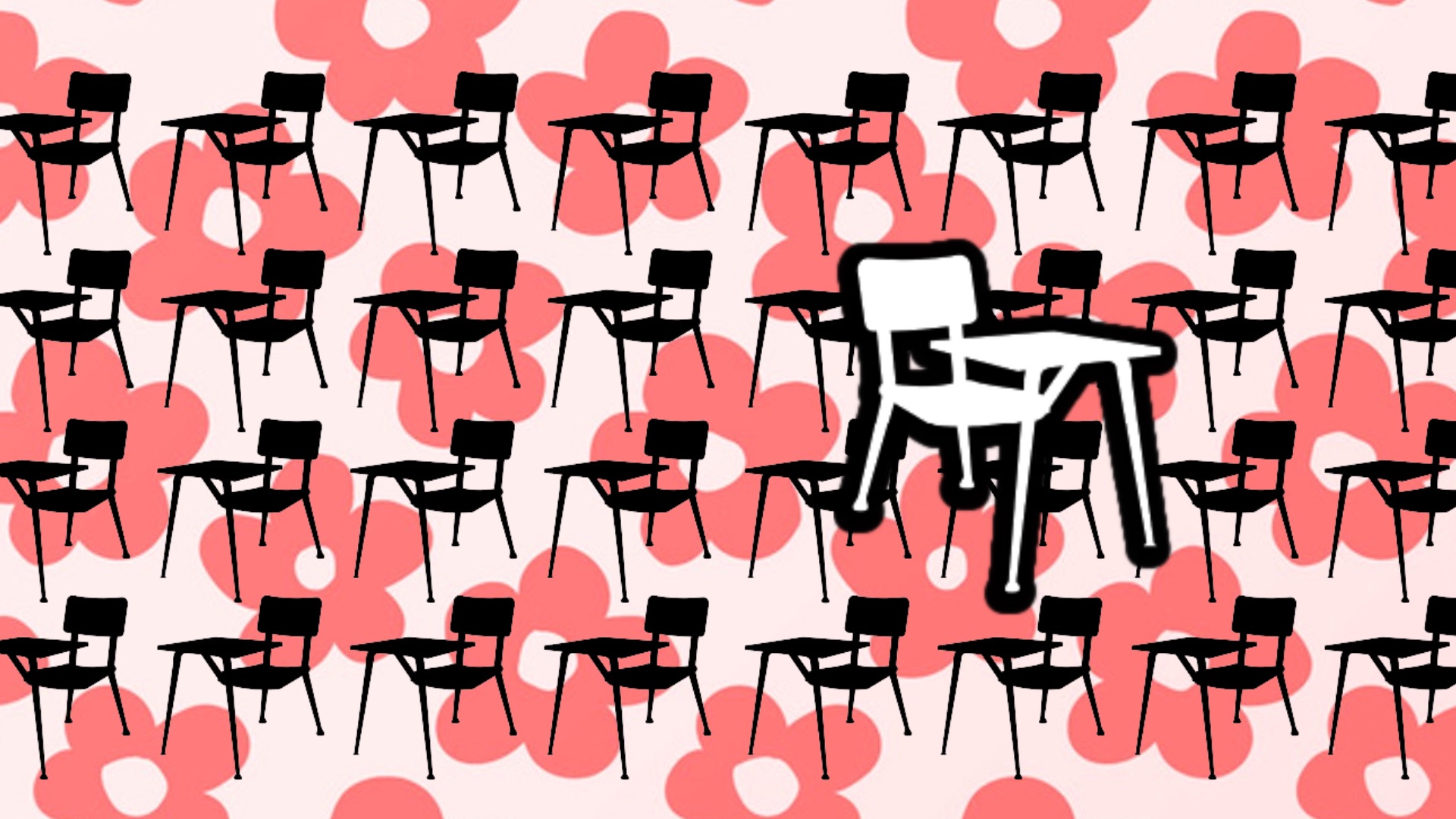
Segregation in the ’70s South
After living in Japan, a young George Lancaster returned to these shores for seventh grade in a Georgia middle school — and found segregation still lingering. These are his memories.
Time period: 1972 – 1978.
It’s English class on the first day of seventh grade at Renfroe Middle School in Decatur, Georgia. I’m alabaster and blond, and just off the boat from Osaka. I’m feeling that familiar, yet uncomfortable sensation of being the only person in the vicinity who looks like me.
It began with confusion several months before. Registering for enrollment had stumped the school’s administrators; they couldn’t figure out my last year’s records from Canadian Academy, an institution founded by Canadian Methodist missionaries in 1913. The K-12 boarding school, which at the time nestled in the verdant hills overlooking Kobe, Japan, enjoyed a reputation for world-class educational excellence. For some reason, its grading system didn’t translate, so Renfroe erred on safety’s side. And placed me at the bottom rung of its academic ladder.
I am the one white kid in a classroom full of Blacks. (I may be wrong about this — 50 years have passed since — but I distinctly remember it.) The teacher is white, but far away, as I’ve elected to sit at the back. Being raised in Japan I’m used to standing out, but upon my return to the United States, I haven’t expected this.
A boy sitting at the next desk over leans toward me and says something. I have no clue what he’s said. He repeats it. Seeing my blank expression, he says it one more time. After another minute of non-response, he points at my extra pencil and grabs it for himself. It’s then my brain figures out what he’s been saying. “Give me your pencil.”
Having a refined ear for the Japanese language has not prepared me one iota for Southern Black English. Not even a simple sentence of four words. I realize I don’t understand any of the conversations going on around me, and I feel my guard rise. For a boy, matriculating into a new school at age 12 can be tough on its own. It’s all bravado and sizing up. My mind constricts: How am I possibly going to navigate this foreign landscape without unknowingly inviting physical injury?
The teacher asks for our attention. Her Southern accent is strong but understandable. She then requests us to open our reading books and individually read paragraphs out loud. Some kids struggle, most do fine. And to me it sounds recognizably English. Then it’s my turn.
I rattle off the words in what I consider normal speed. With the clipped, precise enunciation instilled in me by my educator mother who, during first and second grade, taught me English in the afternoons after I returned from Japanese elementary school. When I look up when done, expressions around me suggest incredulity. Even the teacher appears stunned.
And so it goes for the next six years, first at Renfroe Middle, then Decatur High. Although both schools are 65 percent Black, rarely do I share core curriculum classroom space with Blacks.
The next day I’m told to report to a different set of classes, beginning with English. These turn out to be the pinnacle of the institution's academic instruction. In each class, there are one or two Black faces. Otherwise, they’re all white.
And so it goes for the next six years, first at Renfroe Middle, then Decatur High. Although both schools are 65 percent Black, rarely do I share core curriculum classroom space with Blacks. This confines my interracial interaction to the hallways, the cafeteria, the dirt playing field during recess (at Renfroe), extra-curricular classes like Automotive and Drafting, and the one year I play American football in ninth grade.
On the football team, I'm one of two white players, yet I feel welcomed as a brother. But I’m never more than a second stringer, so in tenth grade I quit the team and focus on European football. I immediately miss the exceptional, exuberant, otherworldly camaraderie I leave behind, for the soccer team is all white but one.
Chorus provides the one constant for the duration. Singing isn’t natural for me, and I'm not talented. And for a young man, there’s the enduring connotation that chorus is the domain of sissies (and other euphemisms). But I’m forced into it. Because of my golden locks. And my keen interest in keeping them shoulder-length.
In the mid-’70s, JROTC (Junior Reserve Officer Training Corps) is still mandatory for all Decatur High boys. This means short hair, preferably buzz cuts. And wearing a military uniform one day a week. The two exceptions are boys in the marching band. And in the choral group. As I have no knack for external instruments, I choose my internal one.
The vocal ensemble is mostly Black. And mostly girls. Except for being on the State championship-winning soccer team in eleventh grade, participating in chorus is probably the best experience of my high school life. The patient, charismatic and inspirational Black choral leader is a joy to be around. And the music is heart-lifting. His chosen songs range from rousing old spirituals to current pop music to the heraldic Handel’s Messiah. We boys, dressed in black trousers, white shirts and black ties (and the girls attired in black skirts and white blouses), perform at school functions and for outside events. We’re not that good. but it doesn’t matter. We bond across the racial divide. And I get to keep my hair long.
The strange nature of the Black/white academic separation is driven home in one stark instance. I think it’s senior year. During advanced English. The door is open to the hallway, and two Black guys pass by. They then double back and peer inside. One shakes his head in disbelief and says to the other, “Didn’t know we had any of these anymore,” in a loud enough voice for all of us to hear.
He doesn’t have to explain. Sharing glances with my white classmates, we all know what he meant.
I do not know how my Black friends felt about the academic segregation. I would love to go back in time and ask them. One Black girl in all those upper-level classes remains a steadfast friend. Maybe she'll open up. Or perhaps I could visit one of the reunions, which are continually (and enthusiastically) arranged by the Blacks, but that’s not likely, given my home is now in Sydney, Australia, 10,000 miles away.
Looking back, all I know is when given opportunities to mingle across the racial barriers, I felt blessed, as if partaking in something uniquely charmed and wonderful. And well worth cherishing in memory. Even the singular fight.
George Martin Lancaster was raised in Japan (born of Presbyterian missionary parents), lived 30 years in the American South (Atlanta), and since 2008 has embraced Australian citizenship (and Newtown, New South Wales). Married for 34 blissful years to Sydney-born Nicole, he is the father of two adult children. He’s been a hobby writer for years and is finally getting paid as a freelance writer.
About the author
Born and raised in Japan, spent most of my adulthood in Atlanta, and since 2007 have made my home in Sydney, Australia. Am a happy freelance writer for clients, and a delighted composer of my own stories and essays.


